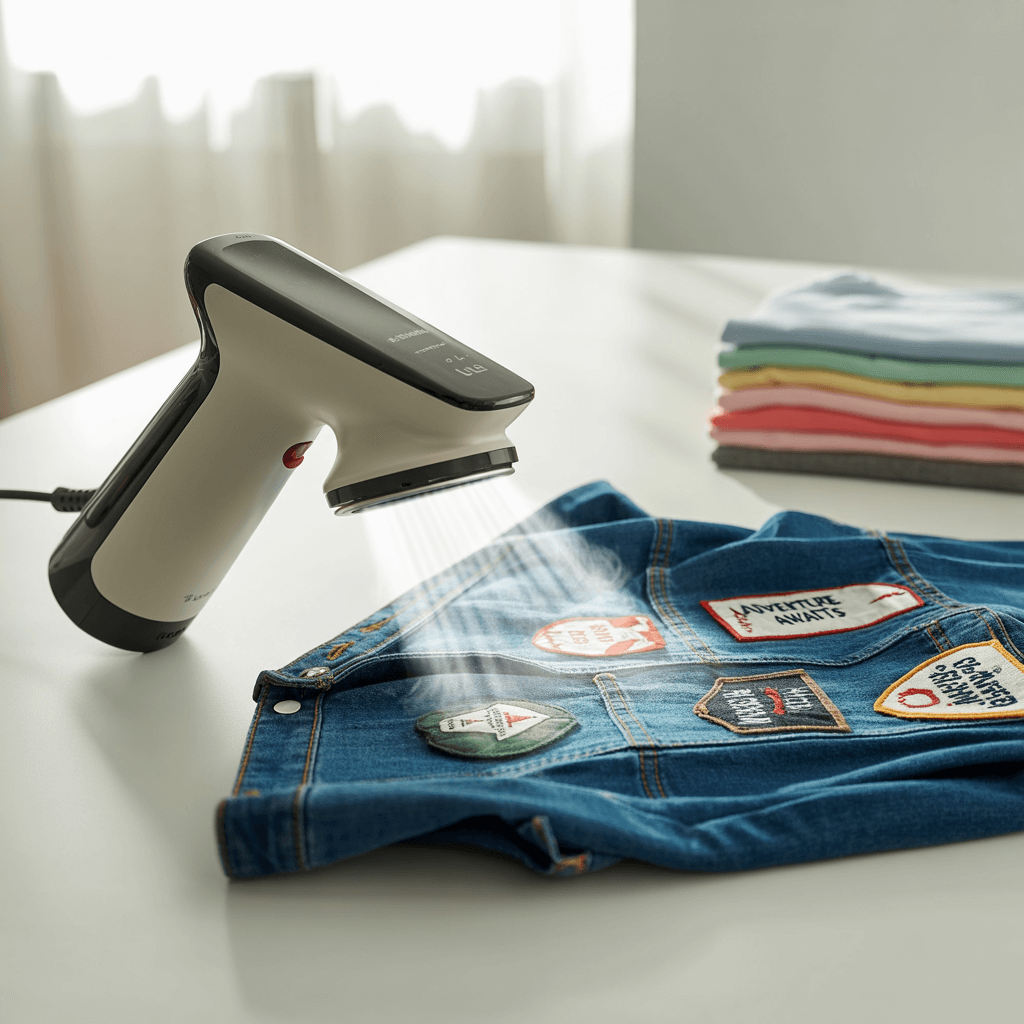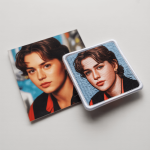Can a little steam ruin your patch game? Or is it the shortcut pros won’t tell you about? Let’s iron this out. When you’re hyped to rock that fresh iron-on patch, be it for your hoodie, tote, or uniform, the last thing you want is a sloppy melt or half-baked stick.
Yet many patch enthusiasts across the UK are skipping one crucial detail: how to apply it properly. One scroll through patch forums and TikTok DIYs, and you’ll find one burning question: Can you use a steamer for iron-on patches?
Spoiler alert: While steam might sound like a gentle shortcut, the truth is a little stickier. Below, we dig into why iron matters, what temperature is ideal, and when a steamer can actually sabotage your patch.
But first, why should you even trust your patches to just anyone?
Why Patch Makers UK Is Leading the Iron-On Patch Revolution
Before we dive into the do’s and don’ts, let’s take a quick detour across the pond. Patch Makers UK, a giant in the custom patch industry, is setting a gold standard in custom embroidered patches, PVC, and of course, iron-on patches.
Their high standards, cutting-edge machinery, and artist-backed designs are redefining patch culture from streetwear to military uniforms.
The Science Behind Iron-On Patches: No Steam, Just Heat
Let’s get this straight, steam and adhesives are not best mates. The glue used on the back of iron-on patches is designed to activate with dry heat. Add steam to the equation, and you dilute its effectiveness. Moisture not only weakens the bond but may also wrinkle the patch or fabric.
So, Can You Use a Steamer for Iron-On Patches?
In short: No. Steamers are made for delicate fabrics, not adhesives. They lack the direct heat and pressure required to bond your patch to the fabric.
For optimal results:
- Use a dry iron (steam function turned OFF)
- Set temperature between 270°F to 300°F (132°C to 148°C)
- Press for 15–20 seconds with firm pressure
- Use a cotton cloth or Teflon sheet to protect both the fabric and patch
Pro Tips for Getting That Flawless Iron-On Finish
Here’s what patch pros swear by:
- Preheat the fabric slightly before placing the patch
- Use even, firm pressure (avoid rocking or shifting)
- Let the patch cool completely before moving the garment
- Avoid washing the fabric for at least 24 hours
Want your patch to stay on point for years? You’ll want high-quality embroidered patches made in the UK, with durable glue backing that can handle both wear and wash.
Not All Fabrics Play Nice With Iron-On Backings
Certain materials like nylon, leather, or stretch fabrics don’t bond well with glue. For these, sewing is the safer bet. That’s where custom patches Velcro or sew-on options step in.
Looking for quick fixes for problematic fabrics? Explore our guide on Iron-On vs Sew-On Patches.
The UK’s Most Popular Uses for Iron-On Patches
From custom biker patches for jackets to personalised iron-on patches for school hoodies and small business branding, iron-ons are a top pick for:
- Club member insignias
- Custom logo patches for bags or uniforms
- Scout groups and school mascots
- Custom patches for events, marketing campaigns, or brand swag
- Personal wardrobe upgrades (denim jackets, bomber coats, canvas totes)
You can even design your own patch and order with our intuitive tool. So whether you’re going bold or minimalist, we make your patch vision reality.
Common Mistakes That Ruin Iron-On Patches (And How to Avoid Them)
Applying iron-on patches isn’t rocket science but get it slightly wrong, and you’ll find your patch peeling at the corners or sliding off mid-wash. So what should you not do?
- Avoid moving the iron too much: This causes uneven adhesion and patch misalignment.
- Don’t apply on wrinkled or damp fabric: Moisture and folds weaken the glue bond.
- Never skip the pressure: Simply placing the iron without pressing down firmly will leave the glue half-melted.
It’s little things like these that lead patch lovers to ask: how do I stop my iron-on patches from falling off? We’ve covered it all in this ultimate fix-it guide. Bookmark it. Your patch game will thank you.
Why Quality Matters: Not All Iron-On Patches Are Equal
A patch is only as good as its base material and adhesive. Many cheap online stores sell paper-thin patches with weak glue that starts curling up after a single wash.
That’s why smart patch buyers in the UK stick to trusted, reliable patchmakers, like us.
With Patch Makers UK, you get:
- Custom patches made in the United Kingdom
- Quality-controlled production with precise embroidery
- Eco-conscious glue and backing materials
- Zero compromise on durability or detail
From custom patches for hoodies to personalized embroidered patches for events or corporate branding, our range covers every vibe, season, and reason.
Answering What Google Doesn’t
Can I use a steamer to preheat my garment before applying the patch?
Still not ideal. Use the same dry iron to briefly preheat the spot, dry, controlled heat is key.
What fabrics are NOT good for iron-on patches?
Avoid silk, leather, nylon, and anything super stretchy. Go with sew-on or Velcro for those.
How long will an iron-on patch stay?
If applied correctly and cared for, it can last through 30+ washes.
Can I iron it again if the corners start lifting?
Yes, but only after ensuring the area is clean and dry. Use firm pressure with a protective cloth and re-seal for 15–20 seconds.
Iron or Sew? Which is Better?
If you’re dealing with durable garments like denim jackets or bags, iron-on patches are fast, clean, and long-lasting, perfect for quick application. But for high-friction spots (like elbows or knees), or tricky fabrics (like fleece or nylon), sewing adds extra security.
Ending Verdict, Can You Use A Steamer For Iron-On Patches?
Nope. A steamer might ease your wrinkles but it’ll ruin your patch dreams. Stick with dry heat, solid pressure, and the right patch source. Choose quality over shortcuts and your iron-on patch will hold strong, wash after wash.
If you need personalized iron-on patches with quick shipping, rich embroidery, and guidance every step of the way, we’re just one click away. All set to level up your patch regime? Contact Patch Makers UK to get started today.







